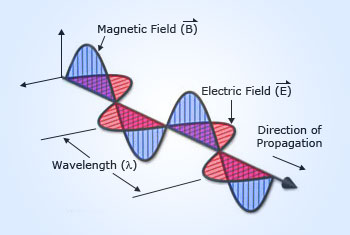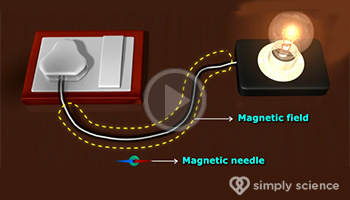 Representation of electromagnetic waves
An electromagnetic wave consists of mutually perpendicular and oscillating electric and magnetic fields. The wave is a transverse wave, since the fields are perpendicular to the direction in which the wave travels.
Representation of electromagnetic waves
An electromagnetic wave consists of mutually perpendicular and oscillating electric and magnetic fields. The wave is a transverse wave, since the fields are perpendicular to the direction in which the wave travels.
 Click to watch video lesson
Click to watch video lesson
We know that electric current produces a magnetic field. We also know that when a conducting loop is moved through a magnetic field, we have electric current induced in the loop. Thus time varying electric and magnetic fields produce each other. This symmetry is very interesting and is one of the most fundamental observations in physics.
James Clark Maxwell (1831 – 1879) formulated a set of equations to explain these effects. There are four equations known as Maxwell′s equations that deal with electric and magnetic fields and their sources (charge and current densities). Together with the Lorentz force equation, the Maxwell′s equations give mathematically all the basic laws of electromagnetism.
The most important outcome of Maxwell′s equation is the presence of electromagnetic wave. Electromagnetic wave propagates in medium when there is a time varying electric and magnetic field present and the speed of propagation is close to the speed of light.
Far reaching conclusion was drawn from this observation – that light itself is an electromagnetic wave. At the heart of production of electromagnetic waves is an oscillating electric charge. These oscillating charges produce an oscillating magnetic field (or flux) and an oscillating magnetic field, in turn, produces an oscillating electric field!